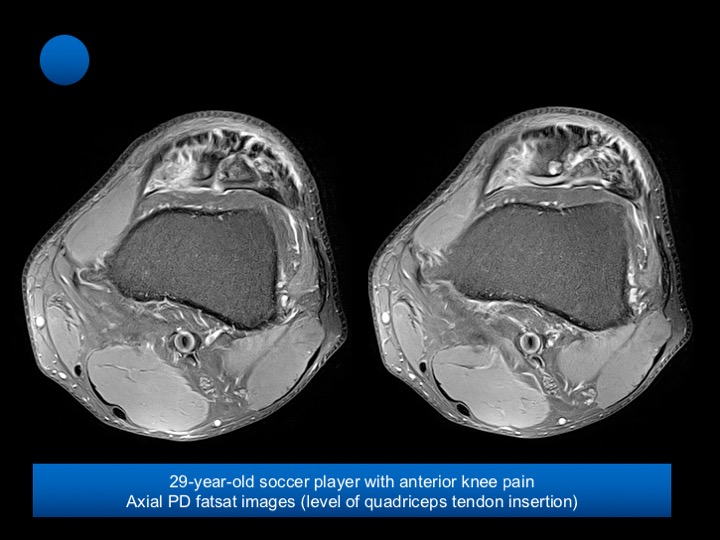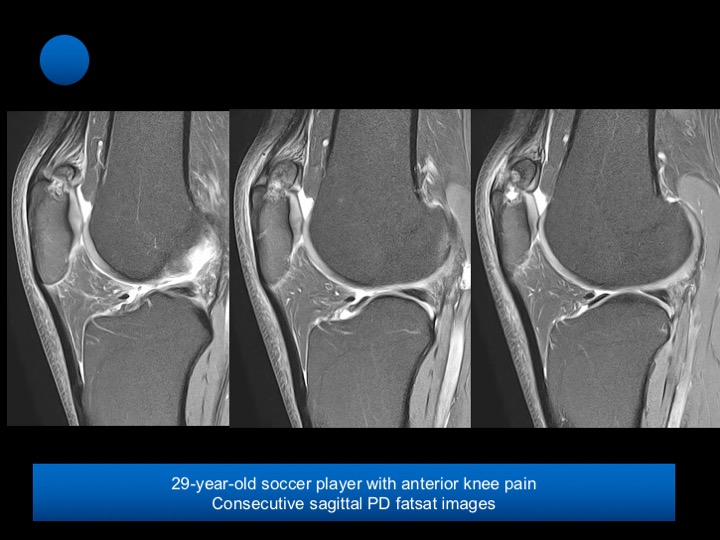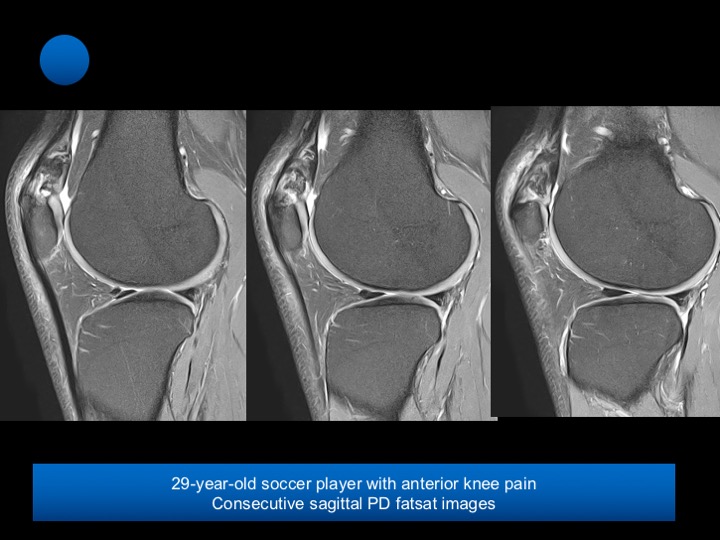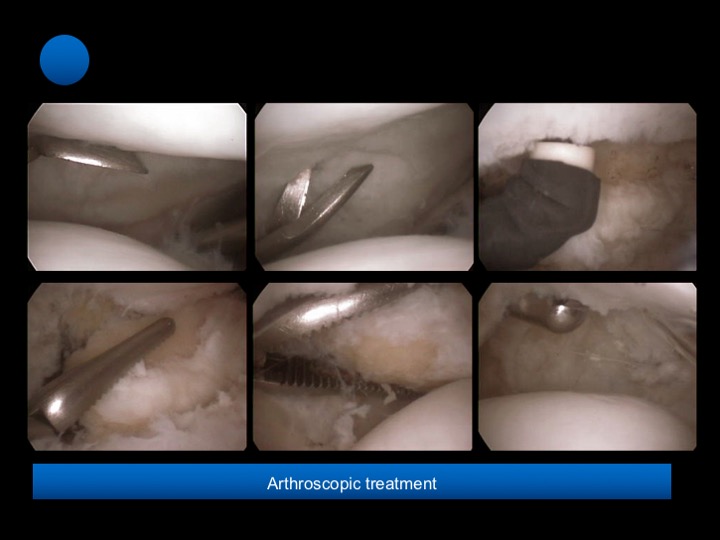OCAD MSK
History
29-year-old soccer player with chronic anterior knee pain





Discussion
Bipartite patella is a developmental variation in which peripheral, accessory ossification centers fail to fuse with the main body of the patella. While at least three different locations of bipartite patella have been described, it typically involves the superolateral aspect of the patella, at the insertion of the vastus lateralis muscle, is seen in approximately 2% of the population, and is almost always bilateral. Bipartite patella is more common in males tan females by a ratio of 9:1.
Bipartite patella is usually asymptomatic and is an incidental finding on radiographs. Only 2% become symptomatic and painful. The majority of painful bipartite patella are reported in young men who are actively involved in sporting activities.
Occasionally, in response to overuse or less common an acute injury, a synchondrosis may become either partly or completely disrupted, allowing abnormal motion, friction, and subsequently the development focal degenerative changes, and edema.
The most common presentation is with anterior knee pain on most activities involving extension of the knee. Reference article.
Diagnosis
patella